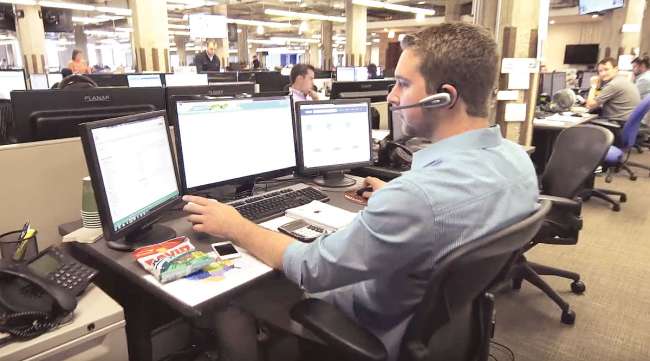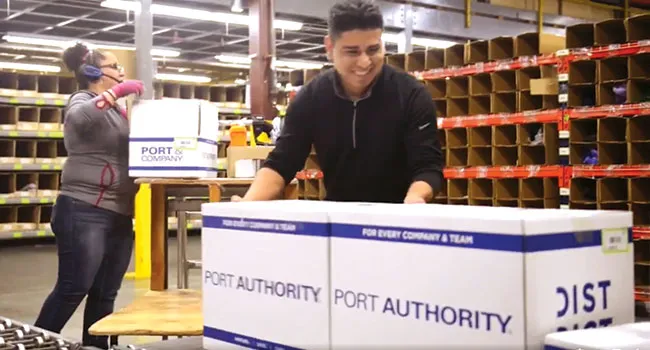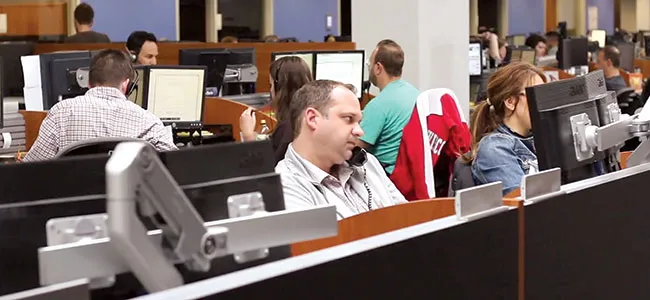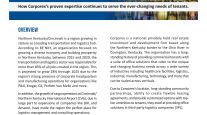Special to Transport Topics
Freight Brokers Adjust as Market Power Swings to Shippers

[Stay on top of transportation news: Get TTNews in your inbox.]
Throughout the pandemic-influenced years of 2020 through 2022, when demand for trucks soared and capacity evaporated, third-party logistics providers and freight brokers assuaged shippers by simply locating a truck for their freight.
Fast forward to 2023. Now, it’s a struggle, with weak demand and abundant capacity in a market that has flipped on its head.
Shippers today are demanding their brokers deliver consistent value based on lower costs, dependable capacity, service and technology that streamlines the entire process. To combat this, brokers and 3PLs are re-emphasizing some tried-and-true practices while continuing to adopt more technology.
Echo Logistics CEO Doug Waggoner believes this market cycle has been somewhat unique given the breadth and severity of the swings.
“The simplistic view is when capacity is tight, shippers rely on brokers to find a truck because we have a big Rolodex [of providers],” he explained. “In a loose market, the prevailing wisdom is shippers don’t need brokers; they can go direct to carriers and get a good price.”
Waggoner added that the industry has evolved significantly over the years, led by technological innovation and shippers demanding more brokers provide automation and enabling technology services.
“If I were a shipper today, I’d want to deal with a broker that has a certain level of sophistication in terms of technology, analytics and integration capability,” he explained. He added that brokers should “have [real-time] visibility into market pricing and find a carrier [at a good price] for every load.”

Waggoner
Waggoner emphasized that freight brokerage remains a relationship business, especially in this market cycle. “There is one group of shippers and carriers where technology is important, and they want a touchless experience,” he observed. “On the other end are shippers who still give us a paper bill of lading and run their business on spreadsheets and a whiteboard.” Waggoner added that to serve both, there needs to be “a balance of personal touch, expertise and experience between shippers and carriers, backed by strong technology.”
John Janson, vice president of global logistics for branded apparel distributor SanMar, doesn’t think the broker value proposition has changed. With a network of 10 distribution centers across the U.S. and thousands of shipments tendered daily, he remains focused on a small number of trusted, asset-backed brokers. “We are playing the long game,” he noted. “We benefit in the high- and low-demand times. The rate is going to be what the rate is going to be.” Yet Janson admits that “the phone [with calls from brokers] is ringing a lot more now than it has over the past two years.”
Janson said it is best to be proactive in cases in which things can go awry. “[If brokers have] a recovery plan and notify us promptly, we can deal with that,” he said. “What we can’t deal with are surprises.”
Broker technology is a high-value area, Janson added. “Real-time track-and-trace, accurate, automated notifications [are] absolute table stakes,” he said, explaining that improving digital freight matching and dynamic pricing tools are vital as well. As for technology integration, Janson said that SanMar is “IT-strapped” when it comes to launching new supply chain software.

A SanMar warehouse. Broker technology, including real-time automated notifications on market pricing, is a high-value area, according to Janson. (SanMar via Facebook)
“We are really leaning on our brokers for [integration] support. It has to be an easy toolset for us to use,” he said. “If I have to get my IT team involved, it’s not happening. The broker has to demonstrate that capability and deliver on it.”
Brokers essentially have two constituents to keep happy — shippers and trucking providers, noted Rock Magnan, president of RK Logistics Group, a Silicon Valley-based 3PL that also provides truck brokerage services.
“How does a broker differentiate in this market? Quality of equipment, strength of carriers in certain lanes, [and] providing freight lane management versus one-off bookings,” he said. “You have to be a resource for the trucker as well as the shipper.”
Such support includes finding freight in lanes that get a trucker home and booking them into continuous freight moves, helping them earn a steady stream of revenue. “These are not new concepts,” Magnan stressed, yet they are foundational capabilities that have to be performed flawlessly every day, particularly in slack-demand markets. “The broker has two roles. Keep the shipper’s supply chain flowing smoothly, and keep your trusted, quality carriers solvent with consistent, regular loads that enable them to earn a profit,” he said. “No one makes it in this business without some level of profit.”
Shipper Demand
Under any market conditions, shippers need much more from their broker or 3PL than access to a truck, said Mac Pinkerton, president of North American surface transportation for C.H. Robinson. “A great 3PL has the expertise to optimize supply chains, making them more cost-effective for a shipper, no matter what part of the freight cycle we are in,” he said.
In its most recent customer surveys, Pinkerton noted that the company found that 87% of shipper respondents said finding ways to take costs out of their supply chains was critical to their success this year. “That’s why demand for network analysis and supply chain optimization has been at all-time highs,” he noted.
He found that shippers have been increasingly rationalizing and optimizing where they have manufacturing and production, a response to the “get it from anywhere” mentality during the boom times of the pandemic. As the locations of distribution centers and production sites shift, so must the design and allocation of capacity in supporting transportation networks.

Logistics technicians take calls at one of C.H. Robinson's offices. Under any market conditions, shippers need much more from their broker or 3PL than access to a truck, Pinkerton said. (C.H. Robinson Worldwide)
“Shippers are seeking out that kind of help and getting the carriers they need in the right places before trucking capacity turns tight again,” Pinkerton noted. “It’s like the fire department putting their house in order when they’re not putting out fires.” He added that the disruption of the pandemic also was an eye-opener for shippers, causing them to take a step back and examine how they could diversify their supply chains across modes, trade lanes and countries to help mitigate risk.
Another pivot that many shippers have adopted, Pinkerton said, is a re-emphasis on the balance between live loading and drop trailers. “Now that supply chains are functioning more normally, [shippers] have been trying to restore efficiencies in their operations [with] an optimal ratio of drop trailer to live load,” he said, noting that led C.H. Robinson to expand its drop trailer program.
C.H. Robinson Worldwide ranks No. 1 on the Transport Topics Top 100 list of the largest logistics providers in North America.
Kevin Clonch, group director of freight brokerage for Ryder System, said brokers today have to meet three key requirements: capacity, flexibility, and the ability to scale up and down, all while providing the shipper with some insulation against risk. “Those [attributes] have not changed,” he explained. “What I really think has changed, at least beyond the basic pick-and-drop service, is the visibility piece.”

Gragg Wilson of UPS won grand champion honors at the National Truck Driving Championships. Wilson takes us through the competition's course, successful driving practices and how to attract new drivers. Tune in above or by going to RoadSigns.ttnews.com.
Clonch points to the predictive ability of visibility platforms to give real-time statuses and early warnings of problems. He believes the basic value proposition of a broker has come full circle, again. At the same time, he believes technology disruptors that have introduced “no touch, automated processes” have become a serious competitive consideration; however, they have not diminished the primary broker value — they simply reduce the non-value-added processes for the broker.
Clonch warned that this has upped the requirements for traditional brokers. They must adopt that technology and convince customers that they are more valuable as a strategic partner that has both the technology and the market expertise. Also, they can solve complex issues that need more than just an automated response. “It is still a relationship-based business,” Clonch said.
Ryder Supply Chain Solutions ranks No. 9 on the Transport Topics Top 100 list of the largest for-hire carriers in North America and No. 10 on the TT Logistics 100.

Austin
What a broker means to a shipper “has not lost value, it’s just taking on a different meaning,” said Shelli Austin, founder and president of 3PL and freight broker InTek Freight and Logistics. During the pandemic, shippers used multiple brokers “because they thought this would give them added capacity,” she recalled. What shippers didn’t realize is that all those brokers, she said, were hitting the same resources for scarce capacity as if they were “bidding against themselves.”
Today, shippers are more selective about which brokers they use and strategic about the roles they play, Austin said. Most savvy shippers are focusing on one or two key partners, concentrating on the value and cost-of-service provided.
Freight Market Survival
Brokers who have stayed the course with their shippers, maintained a good carrier management strategy, and avoided knee-jerk reactions to temporary market conditions have fared the best, observed Armstrong & Associates CEO Evan Armstrong. “Those who really got clobbered were the ones that just completely relied on the spot market in 2021 and 2022, who just basically played the load boards,” he noted.
Now, the brokerage market is back to basics — and aggressively automating both the front and back office, Armstrong said, noting that an effectively automated back-office operation should be able to process 300 bills per person per day.
Want more news? Listen to today's daily briefing above or go here for more info
Technology has helped increase productivity and allowed some brokers to have as many as 15 loads per day, Armstrong said. Automating the booking process, with apps like Parade and Trucker Tools, is a big step, as has been the impact of automated visibility providers like Project44, FourKites and MacroPoint. “A lot of the digital freight-matching apps will take into account lane history of the trucker, first assign loads to those loyal carriers in your carrier base, and automatically pull carrier information from load boards,” he said, all of which frees up time for the human broker to handle more complex tasks.
Armstrong emphasized that brokers’ experience and expertise and their ability to develop and maintain deep personal relationships with carriers remains a competitive advantage that pure technology players can’t match.
“[The focus is on] cultivating and managing trust among a good base of carriers,” Armstrong concluded. “We are back to the early 2000s in terms of what works, so it is good to have a majority of your business under contract with shippers, and from there, get into managed transportation. That’s in vogue again.”




